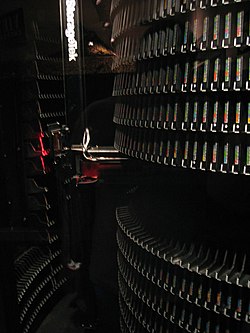 Logo until 2009 | |
| Company type | Public |
|---|---|
| NYSE: STK | |
| Industry | Computer hardware, software |
| Founded | 1969 |
| Founders | Jesse Aweida, Juan Rodriguez, Thomas S. Kavanagh, Zoltan Herger |
| Defunct | August 2005 |
| Fate | Acquired by Sun Microsystems, which was later acquired by Oracle Corporation |
| Headquarters | Louisville, Colorado |
| Products | Data storage hardware and software, professional and support services |
| Revenue | $2.2 billion USD (2004) |
Number of employees | ~7,000 (2004) |
| Website | oracle |
Storage Technology Corporation (StorageTek or STK, earlier STC) was a data storage technology company headquartered in Louisville, Colorado. [1] New products include data retention systems, which it calls "information lifecycle management" (ILM).
Contents
Its remaining product line is now part of Oracle Corporation, and marketed as Oracle StorageTek, with a focus on tape backup equipment and software to manage storage systems.





